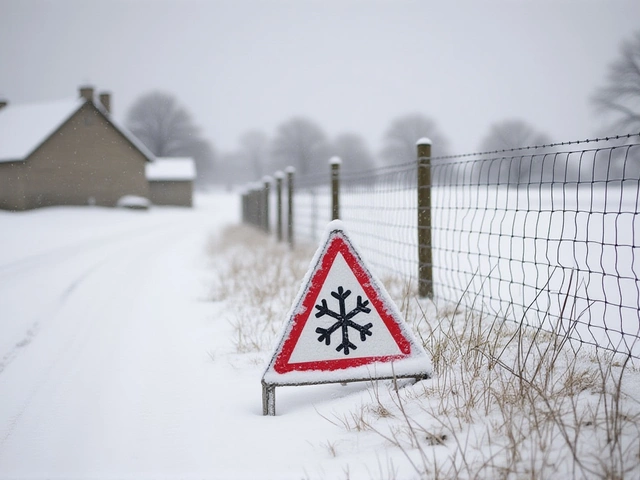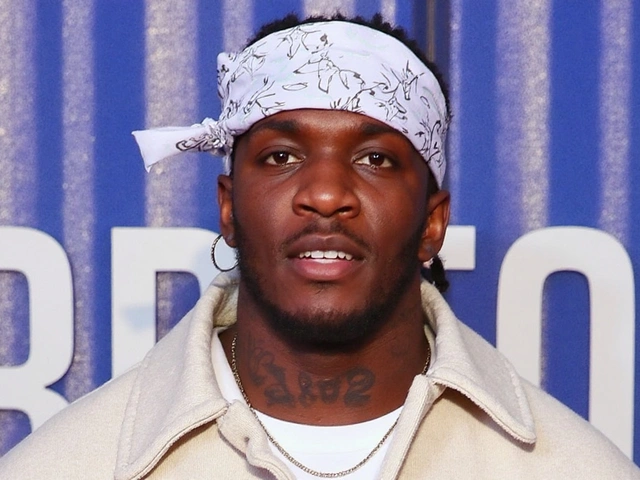When the stratosphere above the North Pole suddenly heats up, the consequences don’t stay in the upper atmosphere—they crash down into our lives. A rare and powerful sudden stratospheric warming event in mid-November 2025 has shattered the stability of the polar vortex, sending Arctic air surging southward across the United States with alarming speed. Forecasters warn the first major cold snaps will hit between December 1 and December 7, 2025, with temperatures in key regions plummeting 20–30°F below average. This isn’t just another winter storm. It’s a meteorological earthquake—one not seen this early in the season in 25 years.
What’s Really Happening in the Stratosphere?
High above our heads—tens of thousands of feet up—something extraordinary is unfolding. A massive pulse of heat, documented by meteorologist Delaine LeBas in late November 2025, is disrupting the normally stable vortex of frigid air that spins over the Arctic. Normally, this swirling mass of cold air acts like a giant freezer door, locked in place by strong winds. But when sudden stratospheric warming occurs, those winds weaken, sometimes even reversing direction. The vortex doesn’t vanish—it wobbles, splits, and stretches. And when it does, cold air escapes.
“When the polar vortex weakens, the result is often disjointed blasts of cold rather than one long, steady freeze,” said WBUR in its November 21, 2025, analysis. That’s the key detail most people miss. This won’t be a single, brutal cold spell lasting weeks. It’ll be a series of sharp, brutal hits—like a hammer tapping a pane of glass repeatedly until it cracks.
Who’s Getting Hit Hardest—and When?
The first domino falls in the Pacific Northwest, where Washington, Oregon, and Idaho could see highs in the teens and twenties by December 3. Then it moves east: the Northern Plains—North Dakota, South Dakota, and Montana—will be slammed by December 5. The Central Plains, including Nebraska, Kansas, and parts of Oklahoma, won’t escape either.
But no region is more vulnerable than Minnesota. Bring Me The News called it “a 25-year anomaly,” noting the state’s history of extreme winter weather makes it a lightning rod for these disruptions. Residents there are being warned to prepare for power outages, frozen pipes, and school closures. In Boston, Massachusetts, the New England region could see multiple sub-zero wind chill events by December 7.
Why This Is Unprecedented—and Dangerous
Historically, major polar vortex disruptions happen in January or February, when the stratosphere is already primed for instability. But this one? It’s happening in November. And that’s not just unusual—it’s alarming. Delaine LeBas described it as “an early-season shift we haven’t seen since the winter of 2000.”
What makes this more dangerous than past events? Timing. Most households aren’t ready. Heating systems haven’t been serviced. Emergency kits are still in garages. Roads haven’t been salted. And with climate change making weather patterns more erratic, these early disruptions are becoming less of a fluke and more of a pattern.
“The cold pool of air is pushed away from the pole and replaced by warmer air,” Bring Me The News explained on November 25. “This shift creates a ripple effect downward into the troposphere.” Translation: the upper atmosphere’s tantrum is now our winter forecast.
What Comes Next?
The National Weather Service is already monitoring the situation closely, though no formal advisories have been issued yet. Expect wind chill warnings, heavy snow alerts, and travel restrictions to roll out as the cold air meets moisture from the Great Lakes and Pacific storms. The biggest impacts are likely to last through December 14, with a possible second surge if the vortex doesn’t recover.
“It’s not over when the first cold snap ends,” said a senior forecaster at the National Weather Service (on condition of anonymity). “If the vortex stays fragmented, we could see this repeat in mid-December. That’s what keeps us up at night.”
The Human Cost
This isn’t just about thermometers. It’s about elderly residents choosing between heat and groceries. It’s about school buses stranded on icy roads. It’s about farmers in the Dakotas losing livestock to sudden freezes. It’s about power grids pushed to the brink.
In 2021, a similar—but later—polar vortex event left millions without power in Texas. This time, the Midwest and Northeast are bracing for a repeat, but with better preparation. Still, energy demand could spike 40% above normal in Minnesota and New England, according to regional grid operators. Utilities are urging customers to set thermostats no higher than 68°F and to check on neighbors.
What This Means for the Future
Scientists are still debating whether climate change is making these events more frequent. One thing is clear: the atmosphere is becoming less predictable. What used to be a once-a-decade anomaly is now a once-in-five-years threat. And if this pattern continues, winter in the U.S. may no longer be a season of steady cold—but a series of violent, unpredictable shocks.
Frequently Asked Questions
How does this affect daily life in affected areas?
Residents in the Pacific Northwest, Northern Plains, and New England face sudden temperature drops that can freeze pipes, delay school and transit, and strain heating systems. Power outages are a real risk, especially in rural areas. Emergency managers are urging families to have flashlights, bottled water, blankets, and non-perishable food on hand. Hospitals are preparing for spikes in hypothermia and carbon monoxide poisoning cases from improper heating use.
Why is this happening in November instead of January?
Sudden stratospheric warming events are typically delayed by seasonal atmospheric conditions, but this year’s heat pulse was unusually strong and early. Research suggests warming in the Arctic Ocean may be altering jet stream patterns, making these disruptions more likely in late fall. While no single event proves climate change caused this, the frequency of such anomalies has increased since the 2010s.
Will this cold snap lead to heavy snowfall?
Yes—especially where the Arctic air meets moisture. The Great Lakes region could see lake-effect snow exceeding 3 feet in spots by December 10. The Northern Plains may get blizzard conditions as low-pressure systems interact with the cold front. Wind chills could reach -30°F in parts of North Dakota and Minnesota, making even brief exposure dangerous.
Is this related to the polar vortex breakup in 2021?
It’s the same mechanism, but the 2021 event was triggered by a different stratospheric warming pattern and hit Texas harder due to infrastructure failures. This year, the cold is targeting regions better prepared for winter, but the timing is more dangerous. The 2021 event occurred in February; this one is happening in early December, catching many off guard.
How long will the cold last?
The first wave peaks December 1–7, with temperatures returning to near-normal by December 10–12. But if the polar vortex remains fragmented—as forecasters fear—a second, weaker surge could arrive around December 15–20. The entire period could feel like a series of winter storms rather than one long freeze.
What should I do to prepare?
Check your heating system, insulate pipes, stock up on essentials, and create an emergency kit. If you have elderly neighbors or family members living alone, check on them daily. Avoid unnecessary travel during the peak cold window (December 3–6). Monitor local NWS alerts and sign up for community emergency notifications. This isn’t a drill—it’s a real and dangerous shift in winter patterns.





